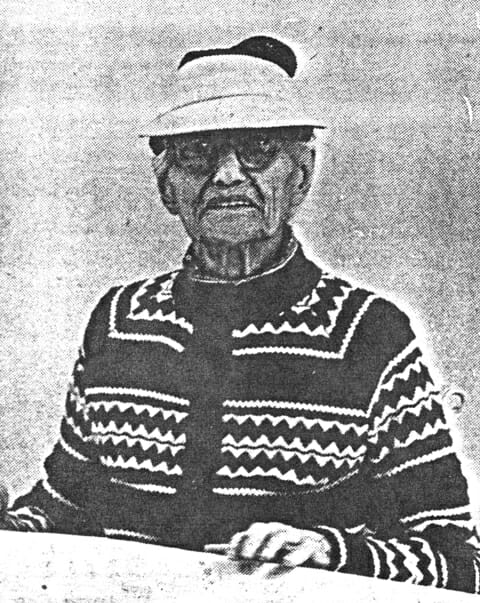Gastineau Channel Memories
Coleman, Ann Brown
as told to Gay Reynolds
Ann Brown Coleman was born September 7, 1872, in Paradise, Kentucky, of Scotch-Irish, German-English stock. She had two half sisters by her father?s former marriage, and two full sisters and three brothers. Ann was the youngest of a family of eight. Three of her maternal ancestors served in the Revolutionary War.
Ann had no formal education. There were no schools accessible. School had to be held during the cold months of the year because children were needed to help with the crops in the spring and early fall. The roads weren?t open in the winter and the six-month?s schooling she had was only when the teacher boarded with her family. The parents paid the teacher $65 a month and she boarded with the families of her students.
It was necessary for Ann to educate herself by reading a volume of Shakespeare. One day while cleaning the attic, when she was seven, Ann found a heavy object that she couldn?t lift. It turned out to be a beautiful, hand illustrated, embossed leather volume of Shakespeare with a brass clasp. Ann?s mother was overwhelmed and concluded that her brother, Erazmus Shull, had bought the book and left it under the eaves and forgotten about it.
Ann?s mother had a marvelous education, so she undertook Ann?s education. Ann?s brother Dick made a small dolly with wheels for the heavy Shakespeare volume. Ann would lie on her stomach under the table and spell out the words to her mother. Her mother would pronounce the words, as well as explain them to Ann. In this way, she learned to read Shakespeare before age 10. The only school books that she came in contact with after that were Butler?s Grammar, Ray?s Third-Part Arithmetic, Goodrich?s History of the U.S. and a geography book. She never had a reader.
Ann?s father was intelligent but high-tempered, abusive, and impossible to live with. Her mother left him and lived with her son, Dick and was finally able to get a divorce in 1889.
In 1888, at the age of 16, Ann left Kentucky for Texas and found a job sewing for a dressmaker in Dallas. She worked six days a week, ten hours a day for 50 cents a day. She later brought her mother to Dallas to live with her, which was the beginning of the first real life she had ever had.
Ann came to Juneau in 1913. She worked as a bookkeeper and accountant and did landscaping on the side. She developed her homestead, where Willow Drive is now located, with flower gardens that became the showplace of Juneau.
She spent many years as librarian of the Juneau Library, which was located in the City Hall building at Fourth and Main. Library patrons of the 1930?s and 1940?s still recall Miss Coleman as the white haired, bespectacled librarian with the green eyeshade, who instilled a love for reading in both children and adults. She retired from the library in the late 1940?s. She broke the ground for the ?new? Juneau Memorial Library (now the City Museum) on September 11, 1950. Coleman Gardens, Coleman Avenue and the Coleman Children?s Room at the Juneau Memorial Library were all named for her.
She spent her last few years in Juneau at Fritz Cove, on Ann Coleman Drive. She was instrumental there in getting her neighbors on both sides to join their lawns with hers and it was a showplace, too. Miss Coleman moved to the Pioneers Home in Sitka, where she died. In 1973, a short time before her death, Juneau celebrated her 100th birthday with an Ann Coleman Day proclaimed by Mayor Joseph McLean.
 |
Ann Brown Coleman |
